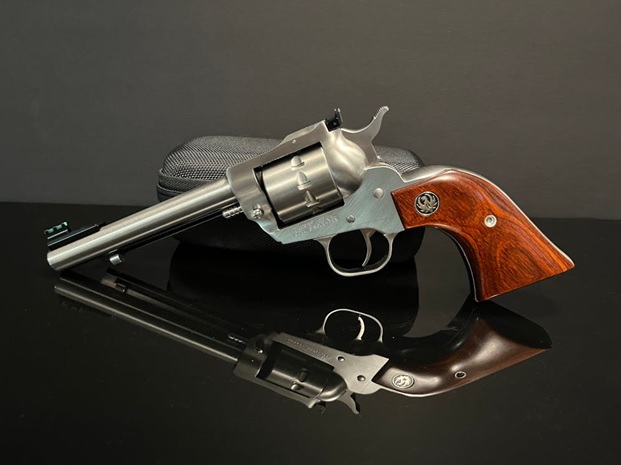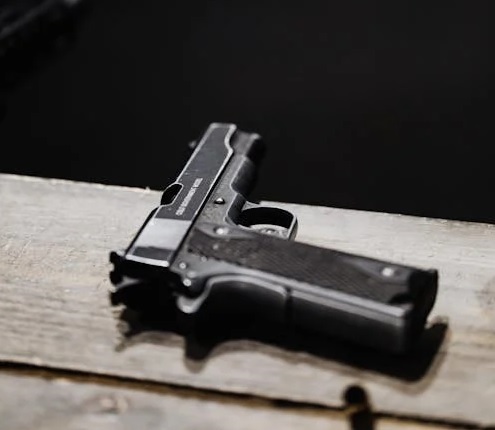For those reading this that are just on the cusp of purchasing their first handgun, there is a very important question to settle:
Should you get a revolver or a semi-auto?
Don’t think for a second that the dust has settled on the wheelgun as a relic of the old west. There are many that carry revolvers specifically because of the advantages they offer over modern slide-action semi-automatic handguns.
But that doesn’t make revolvers better. It’s just that each class has its own advantages and disadvantages, which will be unpacked here.
So hold off for the time being on that purchase of 9mm full metal jacket for range training. You just might need another caliber.
Why a Wheelgun?

There are a number of reasons why you might want to choose a wheelgun over a semi-auto, and none of them are “cool factor,” although that is definitely a thing.
- Mechanical simplicity: Revolvers are neither recoil, blowback, or gas operated. They work through very simple mechanics that revolve the cylinder with every pull of the trigger. This means that a revolver can’t jam in the same sense as a semi-auto, since it isn’t loading new rounds into the same chamber every time you shoot.
- Speed: Technically, action time limits the speed at which a semi-auto can fire. You can shoot a double-action revolver as fast as you can pull the trigger. With that said, this is a negligible point for most shooters.
- Simplicity, easy maintenance: Most revolvers have very simple controls, and therefore are easier to clean. They also tend to be more reliable even when they haven’t been kept on a strict cleaning schedule.
- You can’t “limp wrist” a revolver: Semi-autos are prone to a condition known as “limp wristing” in which if you don’t grip the gun properly, it will jam. Since recoil/gas/inertia are not responsible for the cycling of a revolver, they are immune to this specific issue.
- Cost: There are some very affordable revolvers out there, and in general semi-automatic models tend to be more expensive.
The Bad and the Ugly
While revolvers are well-known and appreciated for their reliability and simplicity, they are not without drawbacks. Among these are:
- Lack of a mechanical safety: Many revolvers do not have a safety; if this is a concern for you, a semi-auto might be a better option.
- Heavy trigger pulls: Many revolvers have very heavy trigger pulls, which may make them unsuitable for smaller-framed shooters.
- External hammers can snag: Many revolvers have external hammers that can snag on clothing. However, there are revolvers with internal hammers that can circumvent this issue.
- Limited capacity: Most revolvers carry 6 or 8 rounds (hence “six shooter”), although there are exceptions. Modern semi-autos (especially double-stack models) can often carry much higher capacities than revolvers that are comparable in size.
Why a Semi-Auto?

Now let’s talk about modern semi-automatic handguns which are the choice for many new shooters. Among the advantages offered by these are:
- Higher capacity: Most semi automatic handguns can carry significantly more rounds than revolvers that have a similar footprint. Double-stack Glocks are a good example; the G19 is a compact model that still has a 15+1 capacity, despite its small footprint.
- Slightly lower recoil: If a semi-auto and revolver weigh the same amount and are chambered in the same cartridge, the semi-auto will produce less recoil. This is because some of the recoil energy is used to cycle the action of a semi-auto. With a revolver, you will have to shoulder all the recoil.
- Easier to reload: If you run out of firepower with a semi-auto, a mag change is all you need to reload. It is much harder to reload a revolver.
- Ability to customize/expand: Many semi-automatic handguns are made with short rail sections under the barrel to which you can add lights, lasers and other shooting attachments. Revolvers generally (but do not always) lack these.
Why Not a Semi-Auto?
To round things out, let’s take a look at some areas in which a semi-auto will fall short when compared to a revolver.
- More maintenance required: While you should keep any gun clean, keeping your semi-auto clean is an imperative matter. A dirty gun is less likely to feed reliably, and fouling can affect performance.
- More likely to jam: Semi-automatic handguns can easily jam if they are limp-wristed or if there are problems with the recoil spring, mag spring, mag seating, extractors, or ejectors. Since the mechanism by which the action cycles is more complex than that of a revolver, they are more prone to fault. Still, modern semi-automatics are generally very reliable.
- You have to remember to charge the chamber before shooting: If you carry with an empty chamber, in a high-stress defensive scenario, forgetting to rack the slide can be a fatal matter. With a revolver, if the cylinder is fully loaded, you just point and shoot.
Get Some 9mm Full Metal Jacket and Get Training
As you can see, there is no shortage of relative advantages or disadvantages to either semi-automatic pistols or revolvers. Often it is a matter of preference for the shooter.
The key point here is that either can work. It’s just about what you prefer. As long as you are well-acquainted with the operation of the platform, as well as what its strengths and shortcomings are, you can be proficient with it.
Now, all you need to do is put in the range time. Stock up on some 9mm full metal jacket, get out there and be safe.

